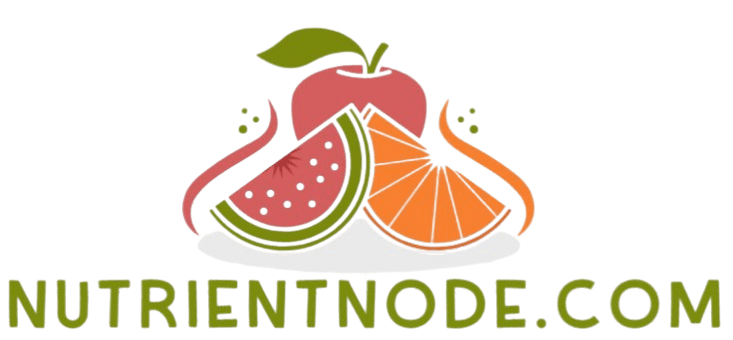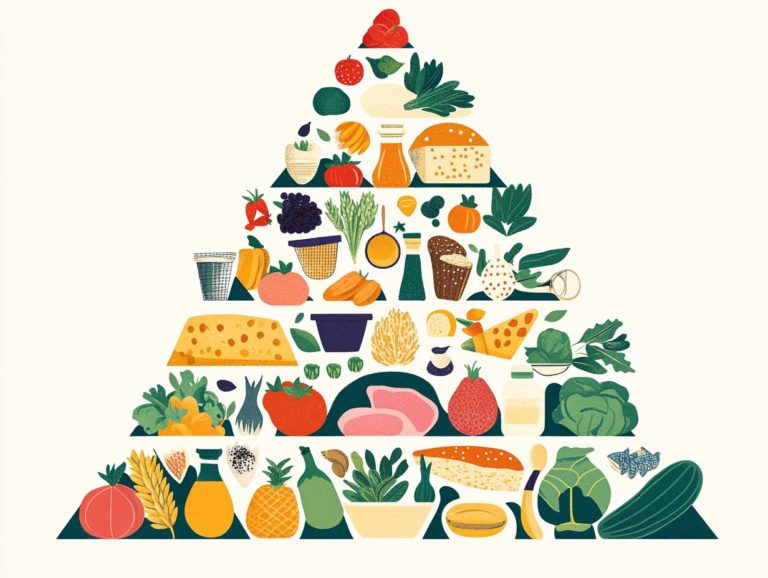How to Prepare for Dietary Guidelines Assessments
Navigating dietary guideline assessments could be a pivotal moment in your health journey. Understanding these assessments is important for making informed nutritional decisions.
This article delves into the significance of preparing for these evaluations. It highlights key considerations to keep in mind beforehand and offers practical steps to ensure you’re fully equipped.
It also explains what to do after your assessment, empowering you to interpret your results effectively and maintain healthy habits moving forward. Don t wait take charge of your dietary choices today!
Contents
Key Takeaways:

1. Proper preparation for Dietary Guidelines Assessments is crucial for accurate results and improved overall health.
2. Factors such as dietary habits, lifestyle, and medical history should be considered before the assessment to ensure a successful outcome.
3. Steps like keeping a food diary and consulting with a healthcare professional can greatly benefit the preparation process.
Understanding Dietary Guidelines Assessments
Understanding Dietary Guidelines Assessments is essential as you navigate the intricate world of nutrition science, particularly regarding the Dietary Guidelines for Americans 2025-2030.
This process involves a thorough examination where scientific questions are explored. Evidence is meticulously reviewed, and public comments are solicited to ensure that the guidelines genuinely reflect health equity and cater to the diverse needs of various communities.
The resulting scientific report is not just an academic exercise; it serves to inform the Federal government and health professionals while guiding policy recommendations designed to improve public health outcomes.
With a keen focus on weight management and minimizing the intake of ultra-processed foods, these guidelines aim to enhance nutrition education and promote preventive services within communities.
What are Dietary Guidelines Assessments?
Dietary Guidelines Assessments are systematic evaluations designed to analyze the nutritional recommendations established for the population. Their primary goal is to enhance public health and equip you with knowledge about healthy eating practices.
These assessments play a pivotal role in shaping nutritional policies. They deliver evidence-based recommendations that everyone can access. By scrutinizing existing dietary guidelines, health authorities can pinpoint knowledge gaps and spotlight areas that require improvement.
This continuous evaluation encourages healthier eating habits among individuals and bolsters nutrition science by generating valuable data for innovative research and interventions.
As a result, the insights derived from these assessments directly inform community health initiatives and educational programs, ultimately enriching the overall well-being of society.
Importance of Preparing for Assessments

Preparing for Dietary Guidelines Assessments is essential. It ensures that the evidence you gather is both robust and reflective of public health interests, especially when considering how to use dietary guidelines for meal planning.
This guides effective nutrition education and policy recommendations tailored for diverse communities.
Benefits of Proper Preparation
Proper preparation for Dietary Guidelines Assessments offers a multitude of benefits, including enhanced health equity and a more thorough evidence review process that accurately reflects the nutritional needs of diverse populations.
By ensuring that all demographic groups are taken into account, these assessments can aid in the development of guidelines that promote equitable access to healthy foods, ultimately leading to improved public health outcomes.
A heightened level of preparation facilitates robust data collection, paving the way for well-informed policies aimed at addressing health disparities.
The careful examination of existing evidence ensures that recommendations are grounded in sound science, fostering trust and transparency among all stakeholders involved. This careful approach boosts community health and strengthens collaborations across various sectors, creating a collective impact that resonates throughout local and national health initiatives.
Key Factors to Consider Before Assessment
Before engaging in Dietary Guidelines Assessments, consider several key factors, including your dietary habits, lifestyle choices, and medical history.
Don t overlook the impact of socioeconomic status on your nutrition and health outcomes, as it significantly shapes your overall well-being.
Dietary Habits and Lifestyle

Dietary habits and your lifestyle shape your health. These factors significantly influence how nutrition science can enhance your quality of life.
As you explore how these habits connect to your well-being, consider how physical activity, sleep quality, and stress management can affect your health trajectory.
Recognize that poor eating patterns contribute to obesity and chronic diseases. They can also impact your mental health and emotional resilience. Therefore, practitioners must consider these connected factors during health assessments.
For instance, analyzing dietary intake without acknowledging your lifestyle behaviors risks drawing incomplete conclusions. This oversight can hinder developing personalized strategies aimed at fostering optimal health and preventing diseases.
Embracing a holistic approach helps you gain accurate insights into the complex relationship between nutrition and health.
Medical History and Conditions
When assessing Dietary Guidelines, consider your medical history and existing conditions, as they shape your nutritional needs and health outcomes.
Your medical background allows for dietary recommendations tailored to your unique health challenges. For example, if you have diabetes, it s important to closely monitor your carbohydrate intake. If you manage hypertension, you may need to limit your sodium intake.
If you have food allergies or intolerances, you ll need guidance that avoids any trigger foods to prevent adverse reactions.
This relationship between your medical history and nutrition highlights the importance of thorough assessments in crafting effective dietary plans that support managing chronic conditions and enhancing your overall well-being.
Preparing for the Assessment
Getting ready for your Dietary Guidelines Assessment can be exciting! Here are some key steps to consider that can enhance your assessment experience, including how to stay compliant with dietary guidelines, ensuring that both your needs and broader public health interests are thoroughly addressed.
Steps to Take Before the Assessment

Before the assessment, don t miss out on the chance to gather relevant health information and consult community preventive services for support.
Start by collecting all pertinent medical records vaccination histories, previous test results, and a list of any medications you re currently taking. This information can significantly influence the outcomes of your assessment.
Reach out to local health organizations or community clinics; they can provide valuable resources such as screenings, wellness programs, and educational materials. These services often offer tailored guidance to meet your specific health needs, ensuring a comprehensive preparation process.
Engaging with healthcare professionals early on can also help alleviate any anxiety and foster a deeper understanding of the assessment process itself.
Tips for a Successful Assessment
For a successful Dietary Guidelines Assessment, incorporate strategies like engaging public participation and enhancing nutrition education. These elements are essential for gathering diverse insights and nurturing a sense of community ownership in health initiatives.
When individuals from varied backgrounds contribute their perspectives, they enrich the understanding of dietary needs and preferences. This provides a clearer picture of the community’s requirements. Effective nutrition education programs empower you and others to make informed decisions about health.
Use interactive workshops and online forums to engage your community. Comprehensive educational materials ensure that the information is accessible and easy to grasp. Prioritizing these strategies leads to more accurate assessments and a stronger commitment to improving public health outcomes.
After the Assessment: Next Steps
After completing your Dietary Guidelines Assessments, grasp the subsequent steps.
This includes interpreting the results and making informed decisions to maintain and enhance your healthy habits.
Interpreting Results and Making Changes
Interpreting results from Dietary Guidelines Assessments is essential for understanding how to implement changes that positively influence your health outcomes.
These assessments provide a clear picture of your dietary habits, highlighting strengths and areas for improvement. By evaluating the data, pinpoint specific food groups that may be lacking in your diet or nutrients that you might be consuming excessively.
This step helps you create meal plans that fit your dietary needs, preferences, and lifestyle choices. For example, you might discover that your intake of fruits and vegetables is low, prompting you to incorporate more vibrant produce into your meals. Start incorporating more fruits and vegetables today!
Ultimately, harnessing this insight enables you to make informed decisions that enhance your nutrition and overall well-being. Take charge of your health today every small step counts!
Continuing Healthy Habits
Keeping up the healthy habits you’ve built is crucial for your well-being. Highlighting the role of nutrition education in your daily life can make a huge difference.
Embracing these guidelines helps build a community that understands nutrition. Consider these strategies:
- Meal planning
- Reading food labels
- Joining community nutrition workshops
These simple actions help foster a wellness culture. Public health programs that share nutritional knowledge empower you to make better food choices.
These efforts enhance personal health and support a vibrant community. Continuous education in nutrition is key to a healthier future.
Frequently Asked Questions
What are food habit reviews? Food habit reviews are evaluations that help you understand your eating habits and see how they align with the Dietary Guidelines for Americans.
Why prepare for a food habit review? Preparing helps you see your current eating patterns and make changes to boost your health.
How to prepare for a food habit review? Start by tracking what you eat, including a variety of healthy foods, and pay attention to portion sizes.
Should I consult a healthcare professional before a review? It isn t necessary, but if you have specific dietary needs, talking to a dietitian or doctor is a good idea.
What to expect during a review? You will answer questions about your eating habits, lifestyle, health status, and any medical history.
How often should I have a food habit review? It’s wise to do this at least once a year to assess your progress and adjust your diet as needed.






